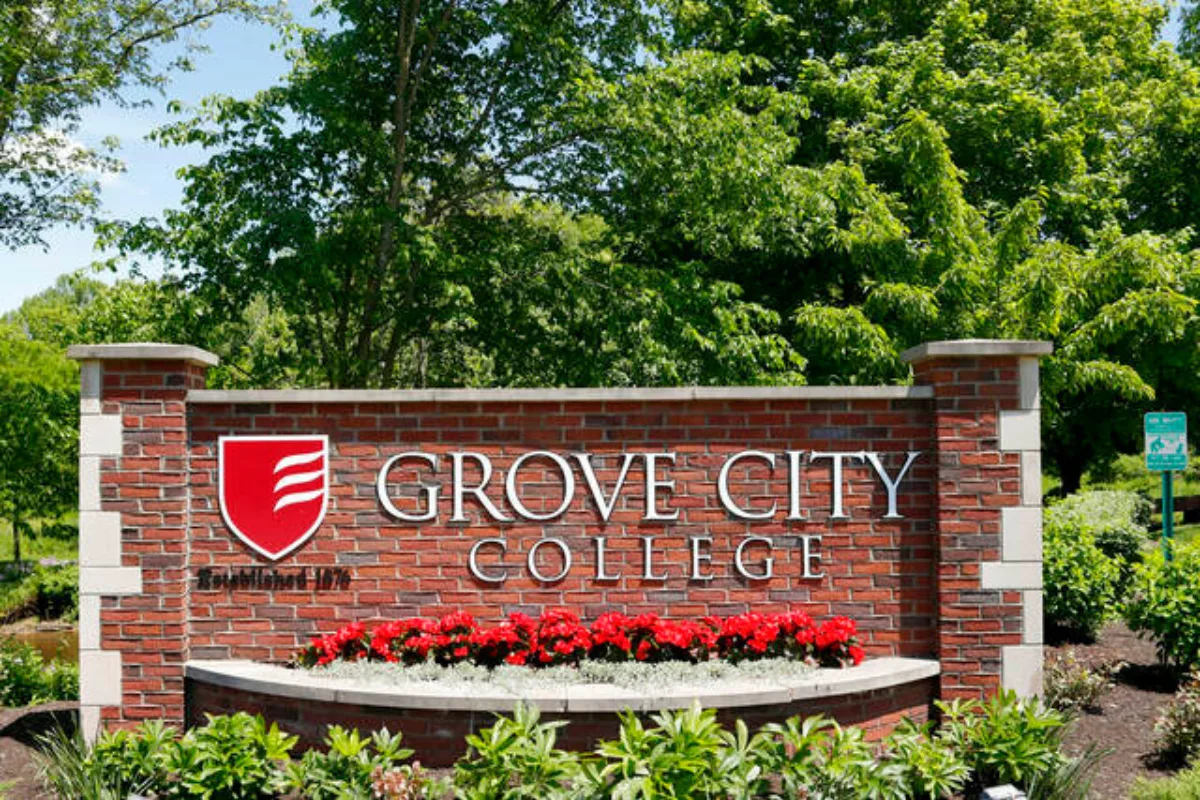On September 28, 2025, Grove City College, located in Mercer County, Pennsylvania, transformed from its idyllic campus vibe to a scene resembling a suspenseful movie in response to police reports of an armed man on campus, with police swarming the campus in response. What started as a relaxed Sunday afternoon turned into a precautionary lockdown that sent shockwaves through students, faculty, and the broader community. For families across the United States with loved ones at small liberal arts colleges, these incidents represent both the fragility of campus life and a swift and decisive response from law enforcement. As details emerged confirming it as a hoax swatting call, the event underscored broader national concerns about these dangerous pranks. In this comprehensive overview of the Grove City College police activity, we’ll unpack the timeline, the response, student experiences, and the ongoing investigation, equipping you with the facts to understand this developing story and its implications for campus safety nationwide.
Overview of Grove City College and Its Commitment to Safety
Nestled in the rolling hills of western Pennsylvania, about 60 miles north of Pittsburgh, Grove City College is a private Christian liberal arts institution founded in 1876. With approximately 2,300 undergraduates, it emphasizes a faith-based education in fields such as business, engineering, and the humanities. The 150-acre campus, centered around historic buildings like the Henry Buhl Library, fosters a tight-knit community where students often describe a sense of family amid rigorous academics.
Safety is a cornerstone here, with the Campus Safety department operating 24/7 and partnering closely with local agencies. The college’s alert system, which utilizes email, text messages, and app notifications, ensures that our communication systems function efficiently. This system has been developed through practice and lessons learned during routine drills. It was a surprisingly unique event that, while unsettling, brought those communication systems to life and reminded American families and students that even in beautiful, small towns, it is essential to be prepared. For those unfamiliar with the area, Grove City is a quiet borough of approximately 8,000 people, and the college serves as the economic and cultural center of the borough; therefore, any disruption would be deeply felt.
Timeline of the Grove City College Police Activity
The incident unfolded rapidly on a crisp fall afternoon, turning a peaceful campus into a high-alert zone. Here’s a step-by-step breakdown based on official reports and alerts:
- 3:55 p.m. Initial Report: Grove City Police Department received a call alleging shots were fired and an individual with a gun was near the Henry Buhl Library, a central academic hub housing over 200,000 volumes.
- 4:29 p.m. First Campus Alert: Students received an email warning of a “potentially dangerous situation” at the library, urging them to remain vigilant and avoid the area.
- 4:44 p.m. Shelter-in-Place Order: A follow-up alert instructed everyone on campus to seek shelter indoors, locking doors and staying away from windows, in accordance with standard protocol for active threats.
- 5:30-5:39 p.m. Full Lockdown: Campus Safety escalated to a precautionary lockdown, evacuating the library and confining operations. Surrounding streets were blocked, amplifying the tension.
- 6:00 p.m. Update on Containment: An alert assured the community that no injuries had occurred and the situation appeared to be contained to campus, although speculation ran high among students.
- 6:40-6:50 p.m. All Clear: After thorough sweeps, the lockdown lifted, with regular activities resuming by 7:00 p.m. Security footage and building searches yielded no evidence of danger.
This swift two-and-a-half-hour resolution prevented panic from spiraling out of control, but it left many questioning the source of the false alarm.
The Law Enforcement Response to the Reported Threat
The response, when the call came in, was textbook efficient and comprised a multi-agency effort reflective of Pennsylvania’s collaborative approach to threats on college campuses. The Grove City Borough Police initiated the effort and secured the involvement of the Pennsylvania State Police, leveraging their expertise in investigations. The Mercer County Critical Incident Response Team, essentially a regional SWAT unit, deployed tactical personnel, while Grove City College’s Campus Safety officers managed on-site logistics.
Eyewitness accounts and media footage captured a formidable scene: armored vehicles, troopers in tactical gear, and K-9 units combing the library and adjacent buildings. Over a dozen agencies, including Mercer Borough and Slippery Rock police, contributed resources, blocking access roads like College Avenue to secure the perimeter. Pennsylvania State Police later confirmed in a press release that no active shooter, victims, or witnesses corroborated the claim, labeling it a “computer-generated swatting call.” This tech-savvy hoax, likely automated using voice-altering software, mimics real emergencies to elicit a maximum response.
For American communities, this mirrors high-profile swatting incidents at schools like the University of Pittsburgh in 2023, where false alarms drain resources, estimated to cost $10,000-$50,000 per incident nationwide. The all-clear was given after reviewing surveillance footage and interviewing dozens, ensuring that no stone was left unturned. Commissioner Daniel B. Helterbran praised the teamwork, noting, “Our priority is always the safety of students and staff.”
Student Experiences During the Lockdown
For the roughly 2,000 students on or near campus that Sunday, the Grove City College police activity turned a study session or casual hangout into a heart-pounding ordeal. Evacuated from the library mid-afternoon, many recounted fleeing with laptops in hand, only to huddle in dorms or the student union. Brian Wasnesky, a junior from Ohio, described officers bursting in with commands to “get down and stay down,” his initial fear easing as the all-clear echoed through group chats.
- Immediate Reactions: Freshmen like Ian Quinn locked doors in Ketler Hall, sharing anxious texts while monitoring the college’s Rave Alert app. “We didn’t know what to think,” Quinn later said, highlighting the fog of rumor versus fact.
- Emotional Toll: Seniors such as Andrew Gondy, sheltering in Hopeman Hall, grappled with conflicting reports, some whispered of an active shooter, others a drill. “It was scary at first because you don’t know if it’s real or a hoax,” Gondy reflected, emphasizing the mental strain of ambiguity.
- Community Support: Faculty and resident assistants played key roles, leading group prayers, a nod to the college’s Christian ethos, and distributing water during the wait. By evening, campus life rebounded with impromptu gatherings in the Gutzwiller Wellness Center.
These accounts resonate with parents nationwide, evoking memories of school lockdowns and the importance of mental health resources. The college’s counseling center extended hours post-incident, offering debrief sessions to process the adrenaline rush.
Understanding Swatting and Its Broader Implications
Swatting, the harmful prank that prompted this police activity at Grove City College, is experiencing a rise in the United States, with over 1,000 incidents occurring each year, according to the FBI. It entails anonymous calls to law enforcement about emergencies, such as an active shooter, that would necessitate a response from the local SWAT team. This is typically accomplished using a VoIP phone or computer-generated voices or pronouncements while remaining anonymous. In this case, the state police have reason to believe the call was scripted and generated by a computer. Grover City was not the only place receiving these calls that day, as there were other incidents to the east in Pennsylvania as part of a regional trend.
- National Scope: High-profile targets include politicians, celebrities, and schools; a 2024 incident at Virginia Tech resulted in a $100,000 fine for the perpetrator.
- Resource Drain: Each response ties up dozens of officers, costing taxpayers thousands and exacerbating strains on underfunded rural departments, such as Mercer County’s.
- Legal Ramifications: Under federal law, swatting is a felony punishable by up to five years in prison; Pennsylvania’s hoax statute also imposes fines of up to $15,000.
- Prevention Efforts: Colleges like Grove City now integrate AI detection in alert systems, while the FBI’s National Threat Assessment Center tracks patterns.
For American educators and families, swatting isn’t just a nuisance; it’s a terrorism-lite tactic eroding trust in safety protocols. Experts recommend anonymous tip lines and community education to combat it.
The Investigation and Road to Recovery
The Pennsylvania State Police’s Mercer Barracks is leading the investigation and accepts tips at 724-748-0044. Initial information suggests that the call was made from outside Pennsylvania and used spoofed numbers, which are frequently used in swatting rings. The metadata of the call and the CCTV footage from campus, once reviewed, should lead to a suspect within a few weeks; this is the pattern in similar situations.
After the events, Grove City College’s focus was on getting back to normal. Classes resumed on Monday, and additional patrol was scheduled for the week, along with a town hall planned for October 1. President McGonigal talked to the community during chapel and stated, “We are stronger than ever before. Our faith and protocols held firm today.” Several local businesses, including some coffee shops in Grove City, offered free drinks to students who were stressed out after the situation, as a show of support for students throughout the borough.
For U.S. higher education watchers, this event highlights vulnerabilities on small-town campuses, prompting calls for federal anti-swatting legislation.
Lessons from the Grove City College Police Activity for Campus Safety
This swatting incident at Grove City College serves as a solemn reminder to colleges across America: vigilance saves lives. There are three key takeaway points to enhance safety: invest in digital forensics, train your community to identify hoaxes, and prioritize student welfare. The campus is returning to alert status, which demonstrates the strength of the community bond.
Be sure to keep an eye out for local news for any updates. Have you ever received a campus alert? Comment responsibly and share your experience safely.





